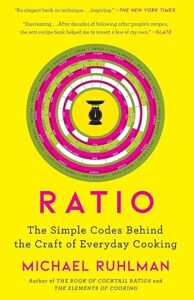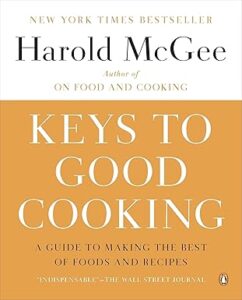“Masala Lab – A fun guide to Indian cooking and the magic of food.”
Patience. That’s the ingredient you are missing. If you give anything enough time, it will turn out delicious. You can approximate all the other ingredients.’ – Excerpt from the book
What comes to your mind when we think of authentic Indian food? We might come up with some stereotypical food like butter chicken, idlis, dosa, and rajma-chawal, to name a few. But in a country so vast and diverse geographically, climatically, ecologically, seasonally, and culturally, authentic Indian food is just a fad. The author, Krish Ashok, says, “Only completely fraudulent people swear by authenticity when it comes to food.”
The book is not about recipes of authentic Indian food, but rather about the science of cooking, as the name suggests. I enjoy cooking and try to experiment whenever I can, but I mostly try out new recipes from YouTube. So, to understand the art and craft of cooking, I decided to read the book to see what the author has in his Masala Lab.
Masala Lab starts with some of the basic concepts of cooking, which I never thought of or considered to be a part of cooking. They were indeed a part, but always taken for granted, and I never really knew the science behind it. The author talks about the physics and chemistry of cooking (don’t be scared) and explains it in simple and easy-to-understand language and examples. It is like preparing myself with the basic knowledge of the various resources and equipment, and how they work, before I start the process of cooking.
While reading the initial chapters, I felt that I was attending science class, going through the basics of physics and chemistry. However, it is written in such a fun and easy-to-understand language that anyone can comprehend it. And still, if you feel you are not enjoying it, you can always skip it.
At this point, it should dawn on you that this is precisely why cooking something dry on metal pans is the fastest way to cook (or burn) food, while boiling something in water takes more time, and baking in an oven takes even longer. -Excrept from the book
I guess most of us are aware of the above, or are we? Either way, the point is that the author explains the reasons and the scientific process behind it. While this may not directly help you cook that perfect mutton dish, reading the book will show you that it does. The author then explains the science of spices and flavours. He tells the readers which spice to add during which stage of cooking and for how long we need to cook the spices (with a scientific reason behind it).
What does boiling do to different food items? What is the role of water and oil in cooking? Why do some food items become soft after cooking, and others go hard? The book answers so many “what happens when” and “why it happens,” and when you know the answers to these, cooking becomes even more fun.
The book also dispels some myths around microwave, non-stick cookware, and refrigeration of food. It also breaks some common misconceptions about the ill effects of certain food items. The author does all this much like a professor addressing a class, clearly, thoughtfully, and to help the readers to become well-informed individuals and better cooks:-). Further, he explains the science behind different food items and various ways to cook them.
One important point the book raises is that in India, we have a variety of food, and the recipes are passed on from one generation to another, but there is no proper documentation. There is no reference point for someone who is entering the kitchen for the first time. Of course, they all have the recipes but no real information or knowledge about the ingredients, and what they do. The author argues that cooking is a right mixture of art and craft, and we are missing the craft.
And because we have never bothered to build a standard, documented model of underlying cooking methods and the science behind those techniques, a metamodel, if you will, Indian cooking continues to wrongly be considered all art and no craft. – Excerpt from the book
Masla Lab is an informative and enjoyable read. If you love cooking, you’re sure to enjoy this book, and it will not only enhance your cooking experience but also help you become a better cook. There is another book, “Moong Over Microchips” by Venkat Iyar, similar yet different, as it is about the journey of food from a seed to fully developed foodgrains, vegetables, and fruits.
About the Author
Krish Ashok is not a chef but cooks daily. He is not a scientist, but he can explain science with easy-to-understand clarity. He trained to be an electronic engineer but is now a software engineer. He learnt to cook from the women in his family, who can make the perfectly fluffy idli without lecturing people on lactobacilli and pH levels. He likes the scientific method not because it offers him the ability to bully people with knowledge, but because it confidently lets him say, ‘I don’t know, let me test it for myself.’
You can follow him on Instagram for interesting posts on food and food science.


